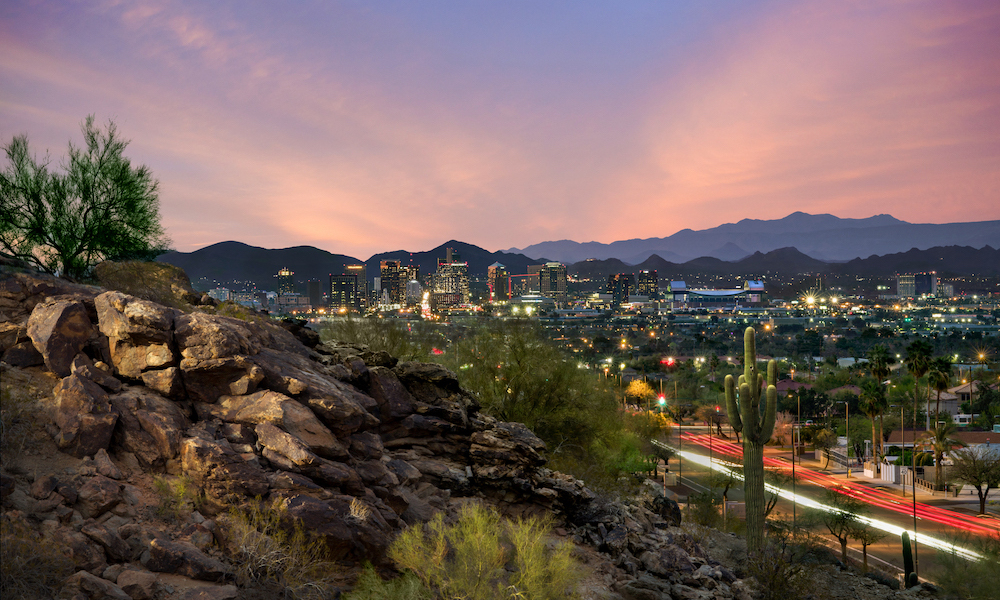
What Makes an Event City? Venues, Infrastructure, and Continual Innovation
Phoenix’s influx of upgrades keeps it top of the list for planners.
What factors do you consider when thinking of the top event cities around the country? Yes, it’s all about the quality and diversity of venues, convention space and infrastructure. But more than that, it’s about staying current and innovative across these realms. Top event destinations must continually advance their offerings to anticipate the evolving needs of a dynamic meetings landscape.
Let’s start with venues, the building blocks needed to support events of all types and sizes. “It’s about the right mix of hotel rooms, the right amount of space and then getting the best value for the money,” says Eric Kerr, Visit Phoenix’s director of research and business analysis. And it’s about growing and adapting these in keeping with market forces, he adds — forces including lifestyle trends and shifts necessitated by major events (such as a global pandemic).
From 2015 to 2020, hotel and resort investments in the Greater Phoenix area totaled at least $1.1 billion. In 2020 alone, Phoenix added 17 new hotel properties with more than 1,900 rooms. “Not only are many new hotels opening up every single year, but they’ve really taken the time [to do it right],” Kerr says, noting the need for technological advancements and properties that respond to changing consumer needs.
Among them is ADERO Scottsdale, which became the region’s first Dark Sky Zone resort—an area that restricts all artificial light pollution—at a time when visitors crave a connection with nature, an indoor-outdoor environment and a focus on wellness. All three major convention hotels in the downtown core—Sheraton Phoenix Downtown, Hyatt Regency Phoenix and Renaissance Phoenix Downtown — have seen total transformations, too. And further advancements are on the horizon. The Ritz-Carlton Paradise Valley, the brand’s first new property to be built in North America in more than a decade—and the centerpiece of the $2 billion, 122-acre master-planned luxury development—The Palmeraie, is set to open in 2022.
When it comes to venues, proximity to local flavor is key for your attendees, who are highly likely to seek out a variety of scenes—from discovering new restaurants and happy hour options to new attractions and entertainment. If they can do this without booking a ride or renting a car, well, it just “makes that destination experience a little bit easier to consume,” Kerr says. “That’s why it’s so important that cities continue to develop [walkability] around the visitor model.”
To that end, downtown Phoenix has welcomed new restaurants that are geared toward accommodating sizable groups, including Pemberton PHX and Luckys Indoor Outdoor. In total, Phoenix saw more than 100 new food and beverage options open during the pandemic.
Beyond eateries, significant event cities also have an array of unique, statement-making venues to help differentiate and elevate the guest experience. The Phoenix Suns Arena has undergone a near full renovation to the tune of $230 million, with new offerings for groups and entertaining: There’s close to 70,000 square feet of new fan amenity space and the largest sports bar in the state. And the Legacy Sports Park Complex is Mesa’s $250 million, 320-acre complex that’s set to be one of the largest privately-owned multisport facilities in the country when it opens in 2022.
Still, venues matter little to prospective attendees if they determine the destination is too difficult or expensive to access. Kerr’s team has survey results that show ease of access is a top priority. For instance, delegates coming from across the country care about which airlines fly into town and how well the airport performs. In the case of Phoenix Sky Harbor International Airport, known as America’s Friendliest Airport, all those boxes are checked as well.
“We’ve had surveys showing that more than 85 percent of people can be coming from out of state to our convention center,” Kerr says. “They want easy, direct flights and multiple airlines flying those routes to make airfares competitive.” Beyond that, they want walkable access to reach restaurants and attractions from the meeting sites, he adds.
In Phoenix, it’s already possible—and convenient—to get from airport terminals to the Phoenix Convention Center using the Valley Metro Rail and Sky Train. Additionally, Sky Harbor’s Terminal 4 is getting eight new gates, new concessions, a bridge to connect the South and North concourses and more. The city is currently working on a $745 million project to create a two-mile extension from the airport’s Terminal 3 to the rental car facility, a project that will include two new stations and 20 new trains. Substantial Valley Metro Rail improvements and expansions, totaling nearly $2 billion, are also underway.
As the industry and the country recover from COVID-19, great meeting cities must also keep hybrid in-person/online meetings top of mind—because the format has proven its value and its ability to expand reach—and it’s not going away. So destinations must continually invest in Wi-Fi infrastructure and other audiovisual improvements that support a forever changed and continually evolving landscape.
“Technology will be big going forward,” Kerr says. “It means you’ve got to keep doing renovations and upgrades to infrastructure to stay alive as an attractive meeting destination.”
This continued emphasis on hybrid events, inspiring and innovative venues, convention space and infrastructure are a great start for meeting destinations. But it’s the forward momentum, in cities such as Phoenix, that sets top contenders apart for your next event.
To find out how you can take advantage of the innovation in Greater Phoenix, visit visitphoenix.com/meetings.
(Visit Phoenix)





